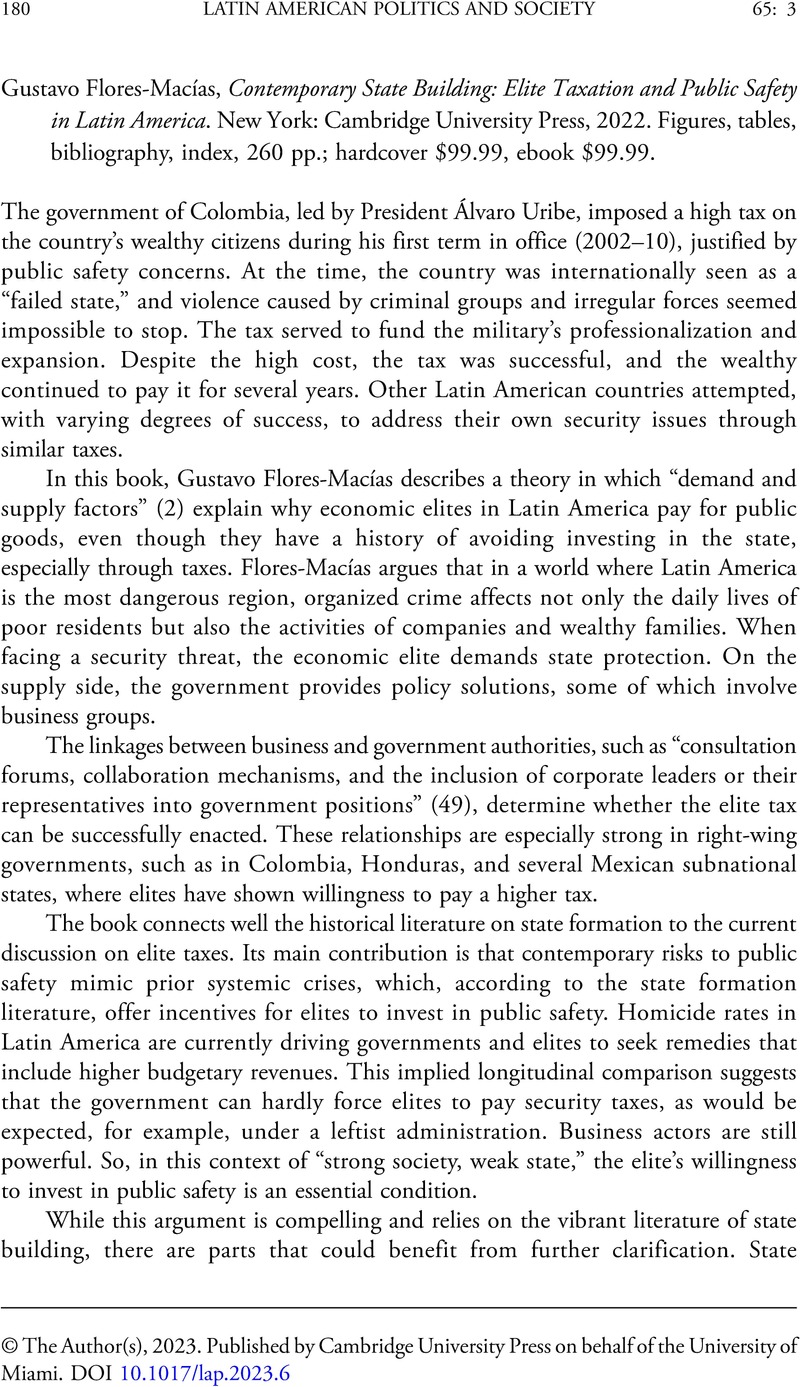No CrossRef data available.
Article contents
Gustavo Flores-Macías, Contemporary State Building: Elite Taxation and Public Safety in Latin America. New York: Cambridge University Press, 2022. Figures, tables, bibliography, index, 260 pp.; hardcover $99.99, ebook $99.99.
Review products
Gustavo Flores-Macías, Contemporary State Building: Elite Taxation and Public Safety in Latin America. New York: Cambridge University Press, 2022. Figures, tables, bibliography, index, 260 pp.; hardcover $99.99, ebook $99.99.
Published online by Cambridge University Press: 03 April 2023
Abstract
An abstract is not available for this content so a preview has been provided. Please use the Get access link above for information on how to access this content.

- Type
- Book Review
- Information
- Copyright
- © The Author(s), 2023. Published by Cambridge University Press on behalf of the University of Miami
References
Note
I am grateful to Hillel Soifer and Ilyssa Yahmi for their insightful feedback on a draft of this text.


